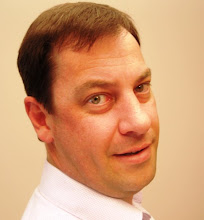Travelling through Israel up the controversial new Highway 6 (the Trans-Israel highway, and an efficient security barrier in itself), then via route 65 and 60, we approached the town of Jenin from the north. Jenin is not on tourist itineraries as it is the location of some of the worst recent incursions by the Israeli military into Palestinian territory, and damaging evidence of the impact of Israeli occupation on the Palestinian economy and lifestyle is everywhere. On the other hand, the Israeli Government felt justified in focusing extreme action against the Jenin Refugee Camp; for some background see the contested Wikipedia page on the Battle of Jenin (2002).
To gain entry to Jenin, we had to apply for permits in advance (in fact, before we left Australia). We stopped at the closed Gate as planned at 10.30 am, and waited while the IDF examined our passports and conferred with others. I say Gate (capital G) because it is the largest armoured gate I have ever seen, bright yellow and about 30 metres long, on a rail-track. Since it is an Israeli military installation, we were not allowed to take photographs. Strangely, I could find no images of the Gate online (if you find one, let me know!), and Google maps of Jenin do not show the Gate or indeed any map data. Click here for another map. After a five-minute wait, the Gate rolled opened and we drove on into the West Bank to the centre of Jenin.
In drizzling rain and on a Friday (the Muslim holy day), Jenin was deathly quiet. Hardly a vehicle visible; people gathered in small groups talking, or walking alone along streets minding their own business. Roads and buildings looked almost derelict, a sign of the severe economic decline suffered by most Palestinians throughout the West Bank in recent years.
Our first stop was an hour-long meeting with the Governor of Jenin, translated from Arabic by Ramzi, our guide, and accompanied by excellent Turkish coffee and apple juice. He briefed us on the economic, educational and health situation in the region, and expressed gratitude to the Australian churches for their ongoing humanitarian aid program supplying water reservoirs to houses in the area. He expressed growing frustration at the economic impact of the illegal Israeli occupation of Palestinian territory, but was hopeful that new initiatives would help to reduce unemployment by up to 30 per cent. He said he was tired of hearing words, and wanted to see action for peace and freedom.
The Governor stressed the importance of moving forward, but said that occupation was driving Palestinians backward. "We need a return to the situation that existed before 2000. Israel must remove the Wall, the checkpoints, and the economic congestion," he said.
"Our unemployed youth have nothing to do, and idleness is the playground of the devil," he said. Also of concern was the plight of large numbers of political prisoners, who must be released and reintegrated into their society.
"We Palestinian people live in fear. The occupation tries to control our land and money. We have lost our employment and been evicted from our land. My family home was demolished when I was a child [in the so-called "War of Independence" - see, e.g., here and here], and we lived one year under trees. I spent 15 years in prison...."
"Education is crucial to our future. We have 68,000 students in schools, but lack basic facilities. Class sizes are 45+ per class, with double shifts meaning that half the children go to school at night. There is a high drop-out rate among girls aged 8-16 years. Also many classrooms in regional areas are rented and suffer from very bad hygiene and overcrowding. Something must be done about this," he said.
The meeting ended with a presentation of local craft to Rev John Henderson, and the Governor left to attend morning prayers.



No comments:
Post a Comment